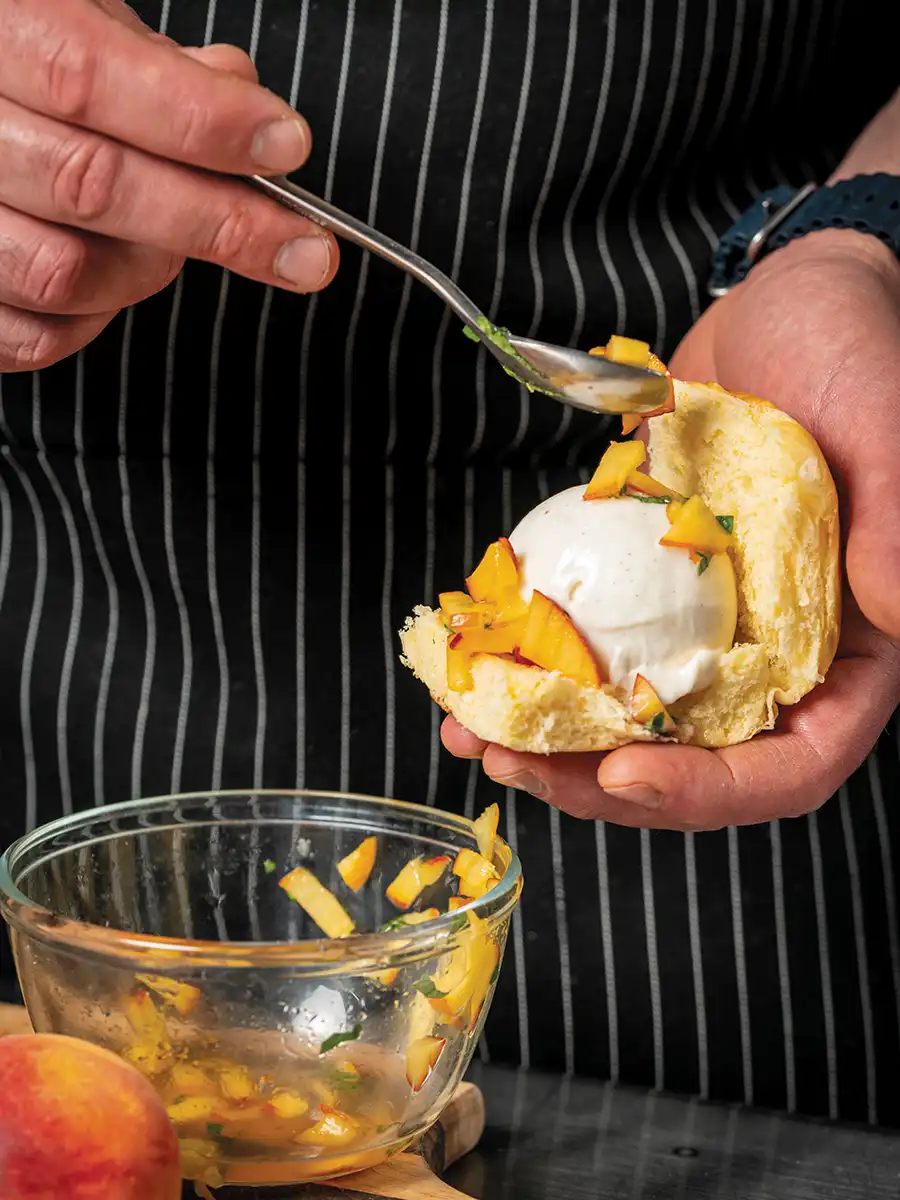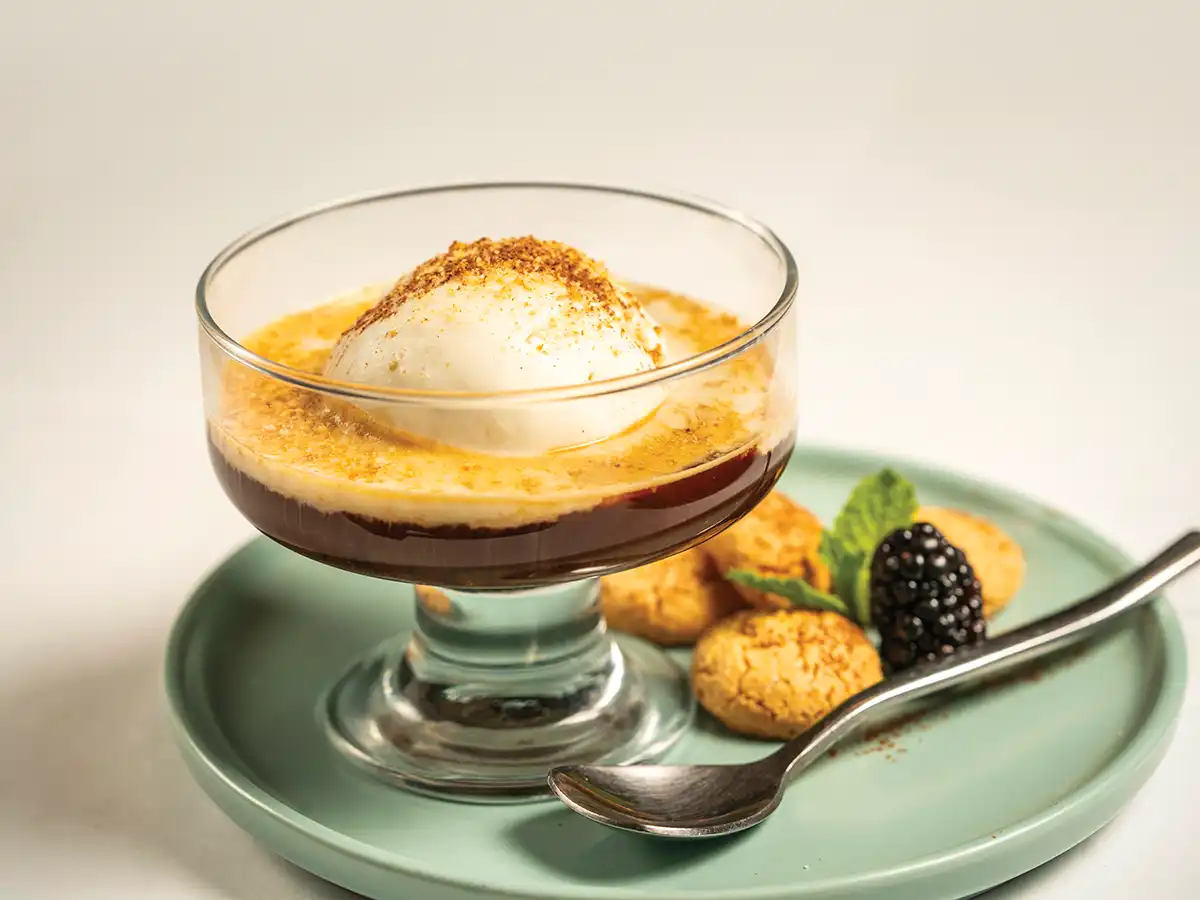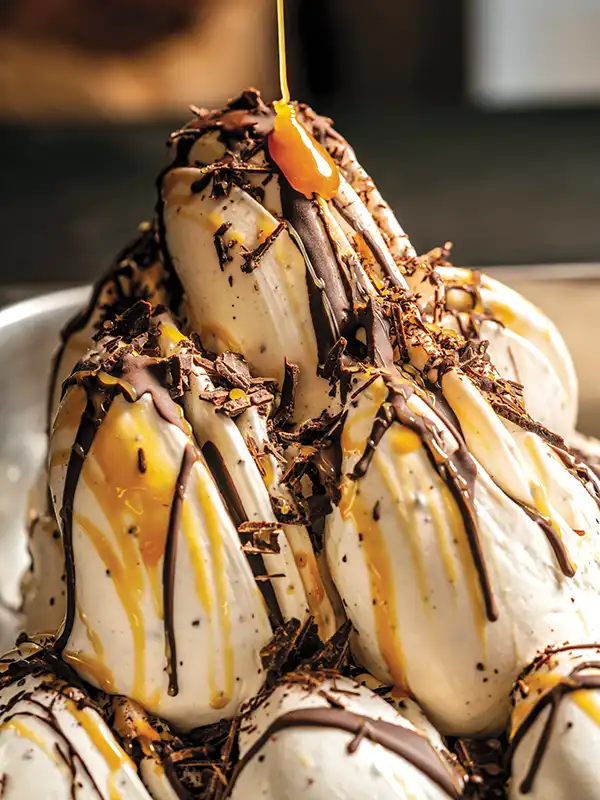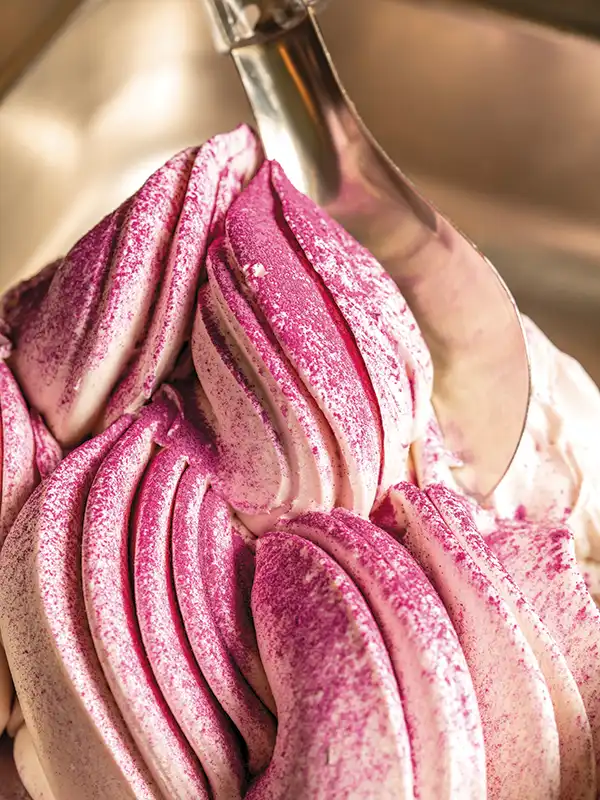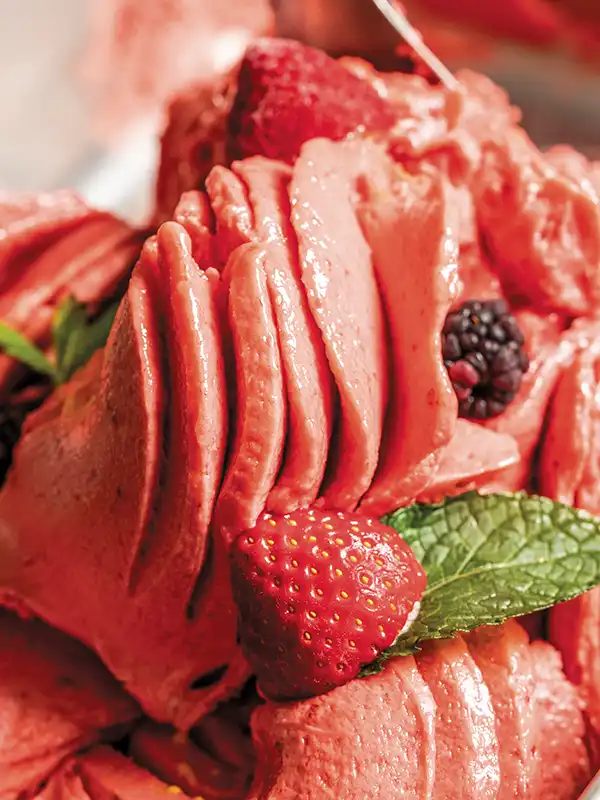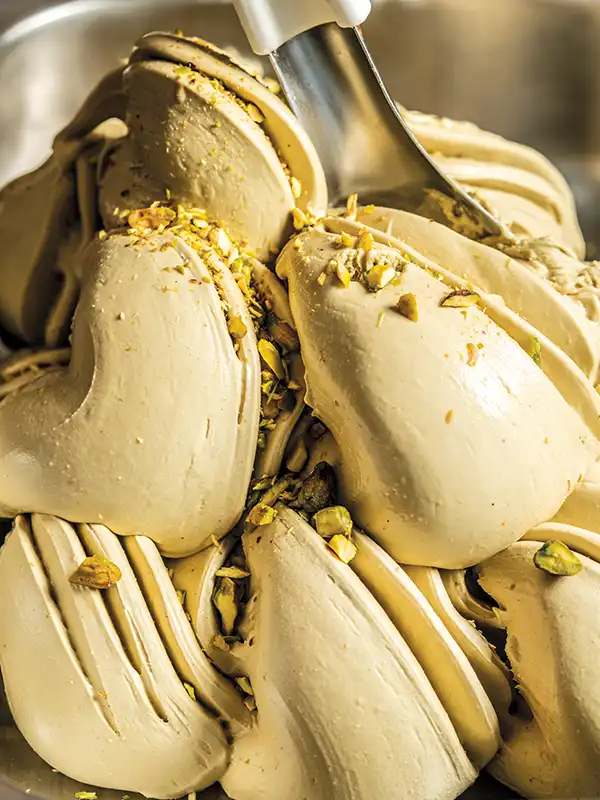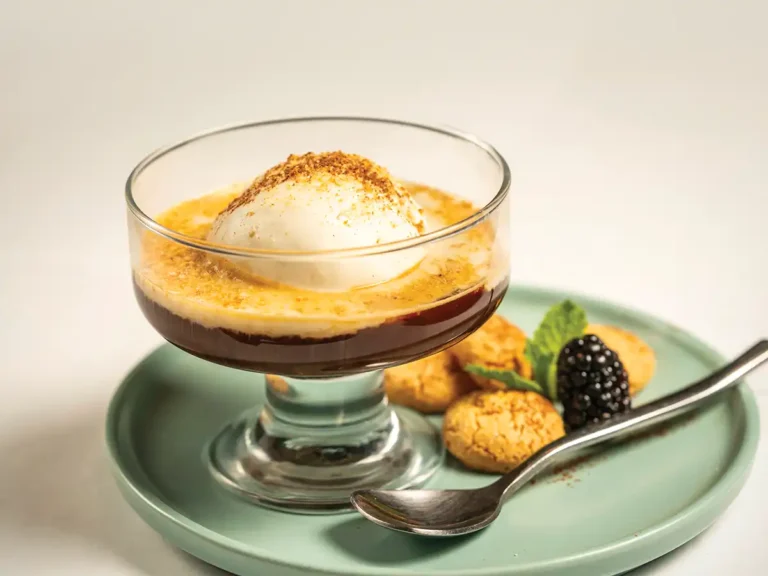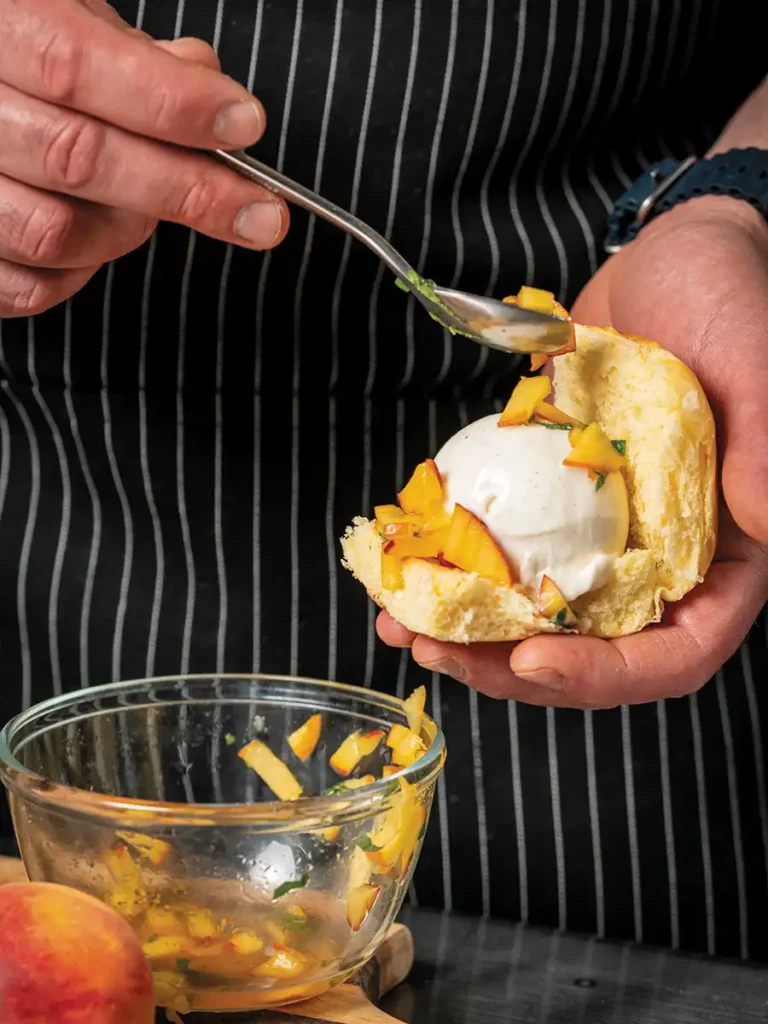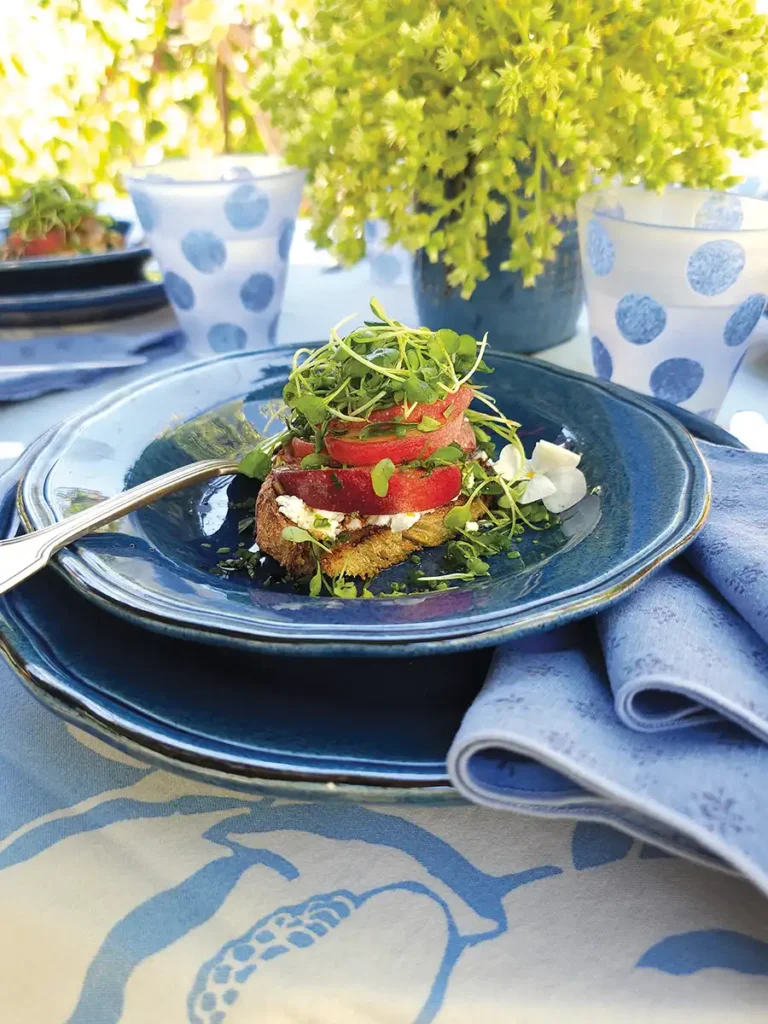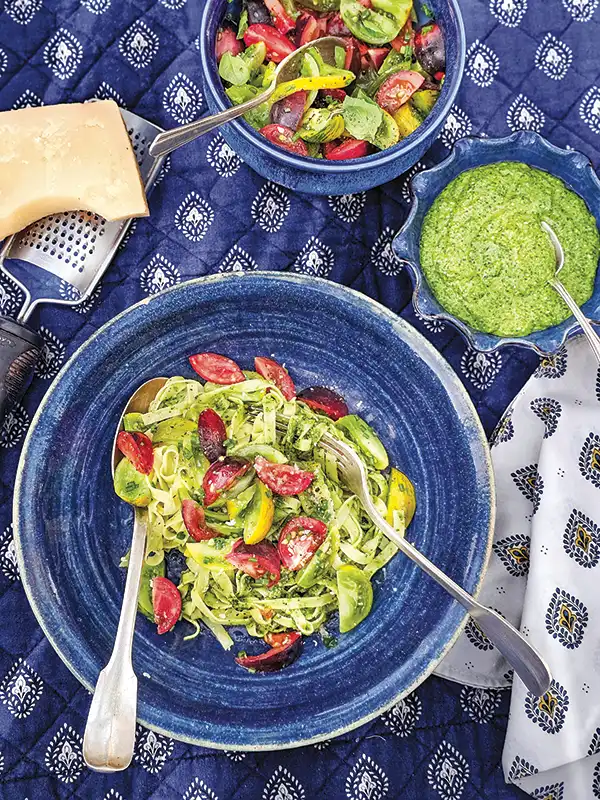Sweet Summer Strolls: Alessio Artisanal Gelato in Solvang
Photos by Fran Collin

Summer days and evenings are meant for strolling. Imagine walking through a small but bustling town with a gelato in hand. The Italians have a name for this stroll—the passeggiata. It evokes cobbled streets, sun-drenched piazzas and cheerful greetings—community building at its best. And the gelato that must accompany this promenade? It is all the sweeter when it is made by an artisan with impeccable attention to detail and a delightful story.
I was in search of that story when I stepped into Alessio’s gelato shop in Solvang one chilly morning. Alessio Carnevale’s Italian accent is as delectable as a cappuccino as he asks, “Are you ready to make some gelato?” But first, coffee. He takes me to Café Joy, just across the courtyard, where the owner suggests a golden turmeric café latte.
Alessio Artisanal Gelato is located in PARc Place, a surprisingly modern cluster of high-end shops and tasting rooms grouped around a central courtyard. Hidden in plain sight, right on Mission Drive, it even has its own parking—a rarity for Solvang. It feels like a destination for foodies. And that’s precisely why Alessio opened his gelato shop here three years ago.
But let’s step back a few decades to the town of Rossano in Calabria, Italy (the instep of the boot), where Alessio grew up. This is farther south in Italy than most tourists go—it’s closer to Sicily than it is to Naples. The region is known for bergamot orange, a bitter citrus fruit that gives the distinctive flavor to Earl Grey tea.
Much like our Central Coast, the region has abundant vineyards, agriculture, seafood and sunshine. Is it any wonder that Southern Italians have emigrated here since the late 1800s? Italian immigrants contributed greatly to Santa Barbara County, shaping its local wine industry, establishing olive oil production and introducing many of our distinctive Mediterranean culinary traditions, both savory and sweet.
That leads us to gelato and Alessio’s story. Growing up in Rossano, Alessio was the middle child of three. He started working at his uncle Franco’s gelato shop during the summers when he was a teenager. His grandfather was a photographer, and his father and brother became photographers. But Alessio chose a different path.
When he was 18, he enrolled in the academy and became a Carabiniere—a member of the Italian military police force. It fulfilled his dream to travel since he was posted to various locations around Italy. While stationed in Rome, he met and fell in love with Nicole Lincoln, an American student from UCSB, who was studying at the University of Rome, who would later become his wife.
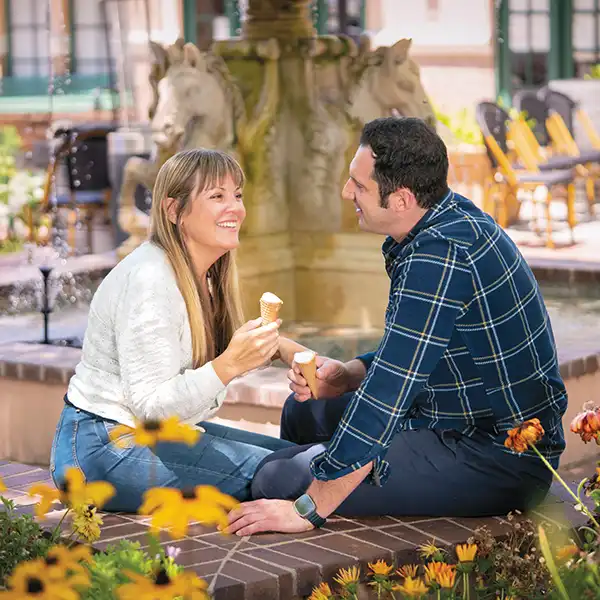
Did the sight of Alessio in one of those dashing uniforms catch Nicole’s eye? I asked Alessio if it was true that the Carabinieri uniforms were designed by Armani. He said, “Yes, of course.” But it was while he was off duty that he and Nicole met through mutual friends at the Piazza Navona. They were both 22 years old. For Alessio, it was an immediate connection—he said when he saw her for the first time, he just knew.
Nicole interjects and tells me with a laugh that she needed a little more time to come to that realization. But they both agree that Rome was a beautiful setting for their romance. They lived on opposite sides of Rome, so many of their dates involved meeting centrally at the Piazza del Popolo.
Nicole tells me, “We would walk, and we would get gelato at Giolitti, the famous gelato shop near the Trevi Fountain. And Alessio would tell me this is the spot.”
That passeggiata and shared love of gelato led to a romance that survived the separation when Nicole had to go back to Santa Barbara. After a few years of visiting back and forth, Alessio joined her, and they got married in 2008. It didn’t surprise me to hear that they had a gelato bar instead of a wedding cake at their wedding.
Moving to the U.S. was a bit of a culture shock for Alessio. When he came here, he spoke no English. He had to start over completely—first taking jobs in construction and restaurants, then taking on the pastry chef position at Trattoria Grappolo and later at SY Kitchen.
Top row (left to right): Stracciatella, lavender. Bottom row: Mixed berries, pistachio.
Initially, he made gelato at home, as something of a nostalgic treat. However, it soon became a regular menu item at SY Kitchen, and catering clients asked for it. Clearly, he was on to something. It seemed that Santa Ynez Valley was ready for authentic artisan gelato. While Alessio credits Nicole with the idea of opening the shop, he told me with a smile that he is never afraid to start something new.
Perhaps it’s easiest to think of gelato as the Italian version of ice cream. But it’s a bit more nuanced than that. When I pressed Alessio for details, he explained that, unlike ice cream, gelato is made with much less air than ice cream is. Since air doesn’t have flavor, gelato is more flavorful. Gelato also has a lower fat content and is served at a higher temperature. Again, this allows the taste of the gelato to shine through and contributes to its silky, smooth mouthfeel. Fruit flavors of gelato, which typically have no dairy, are sometimes called sorbet.
Alessio tells me that his home region of Calabria lays claim to one of the earliest versions of sorbet. Scirubbetta Calabrese or Calabrian sorbet is a traditional preparation using freshly fallen snow from the mountains in Calabria mixed with fig honey. The name scirubbetta comes from the Arabic word for cold beverage—sharbat, from which we get the names sorbet and sherbet.
To uncover what made his gelato so special, I spent a morning with Alessio helping him make a batch of his classic vanilla flavor, which has a base of mostly milk with a bit of cream. The process began with me scraping the seeds and paste from vanilla beans and ended with us sampling the exquisite soft gelato after it was slowly pushed out of the machine.
Throughout the process, I realized that the reason his gelato was so flavorful was not just because the gelato had less air or because it was served at a higher temperature. It wasn’t even just the fact that he had a professional gelato machine imported from Italy. It was a combination of these things and more. At each step of the way, Alessio uses the best-quality ingredients and seasonal local produce whenever possible. He is methodical and precise about crafting each batch. And when you talk to him about flavors, he speaks like an artist. Color, combinations, sensations. He is continually inspired to try new things and to share his passion with his willing customers.

Much as I love making my own desserts and have even tried a few gelato recipes over the years, it has become clear to me that gelato is not just a recipe. Gelato has been an Italian tradition since the Renaissance. At first, it was only available to the nobility but gradually became more accessible in the 20th century. And as it became available on the streets of every Italian city via mobile carts and small shops, gelato melded perfectly with the tradition of passeggiata. Typically, Italians don’t eat or drink while walking around, but gelato is an exception.
Here in the United States, gelato was overshadowed by ice cream for many years, although now it’s quite popular—you can buy mass-produced pints of it in the grocery store. But for the real gelato experience, you need to seek out freshly made artisanal gelato.
It’s not just the delicious taste of the gelato that you’ll experience. It’s stepping into that charming shop and talking to the owner with the lilting Italian accent. It’s sampling a flavor and deciding that you’ll try something you’ve never had before, like black tea lavender or passion fruit white chocolate. It’s taking that cone or cup and savoring it while strolling down the streets of Solvang. Maybe that sweet treat will inspire you to smile a little more at the people you pass by, and you’ll say hello or stop to chat with someone you know.
If your love for gelato grows and you want to bring that taste to your next summer dinner party, you can buy some freshly made gelato to take home. You may even want to try making affogato for your guests or brioche gelato sandwiches. Warning: gelato can easily become an addiction.
Isn’t it nice to indulge in a treat from time to time? Especially if we can bring it outside and connect with others. Perhaps it takes someone from another country to show us what we’ve been craving. A tradition from another culture that has the potential to bring us together is well worth embracing. Alessio has brought us his talent, his vision and the cheerful expression around his eyes as he greets people who walk into his shop. Something is now linked from Calabria to Santa Barbara County, and it is sweet.
RESOURCES
Visit Alessio Artisanal Gelato at 1623 Mission Dr., Solvang, Wednesday through Sunday noon–6pm.
Website: AlessioGelato.com
When in Rome, visit Giolitti Gelato at Via degli Uffici del Vicario, 40, Roma
